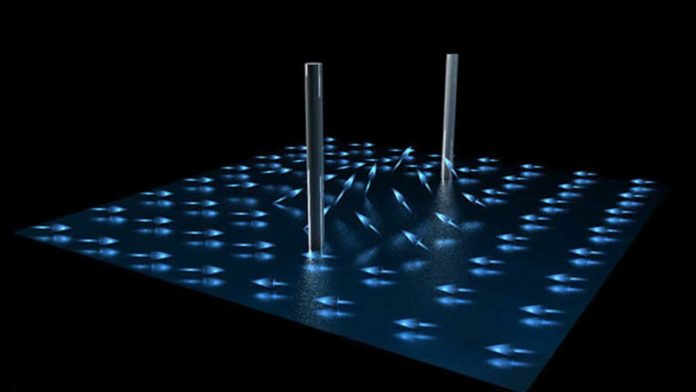Helium remains a liquid at atmosphere weight notwithstanding when chilled down to absolute zero, at which every other material freezes solid. In addition to the fact that helium remains liquid at cryogenic temperatures, it turns into a superfluid at an adequately low temperature. A superfluid material has basically zero viscosity, which implies it should stream perpetually without losing energy.
Out of the blue, analysts have recorded the long-predicted occurrence of ‘walls bound by strings’ in superfluid helium-3. The presence of such an object, initially anticipated by cosmology theorists, may help to clarify how the universe chilled off after the Big Bang.
With the newly discovered capacity to reproduce these structures in the lab, earth-based scientists have an approach to think about a portion of the conceivable situations that may have occurred in the early universe all the more intently.
Jere Mäkinen, lead author of the study said, “We initially thought that the half-quantum vortices would disappear when we lowered the temperature. It turns out that they [half-quantum vortices] actually survive as the helium-3 sample is cooled below half a millikelvin–instead, a nontopological wall appears.”
While not physical walls, which would block the flow, the nontopological dividers modify the magnetic properties of helium. The scientists could distinguish the progressions by utilizing nuclear magnetic resonance.
In the initial few microseconds after the Big Bang, a few cosmologists believe that the whole universe experienced symmetry-breaking phase transitions, similar to a superfluid inside a nano-organized volume as it is chilled.
The hypothesis goes that quantum fluctuations or topological imperfections, similar to domain walls and quantum vortices, in the ultra-consolidated universe were solidified set up as the universe extended. With time these frozen fluctuations turned into the galaxies that we see, and live in, today. Having the capacity to make these items in the lab may enable scientists to see progressively about the universe and why it framed in the manner in which it did.
To sweeten the deal even further, the structure of these hurricane-like defects Mäkinen made in the research facility additionally gives a potential model to the investigation of topological quantum computing.
Mäkinen said, “While liquid helium-3 would be too hard and expensive to maintain as a material for a working computer, it gives us a working model to study phenomena that could be used in more accessible future materials.”
The study is published in Nature Communications.
